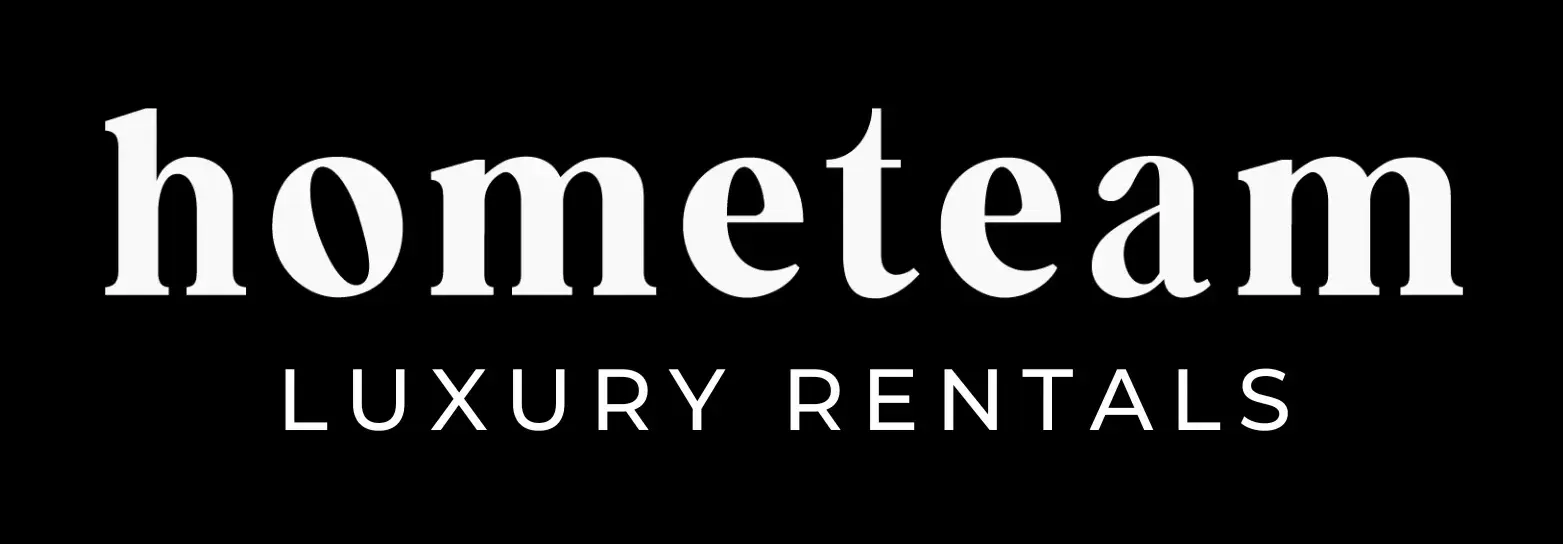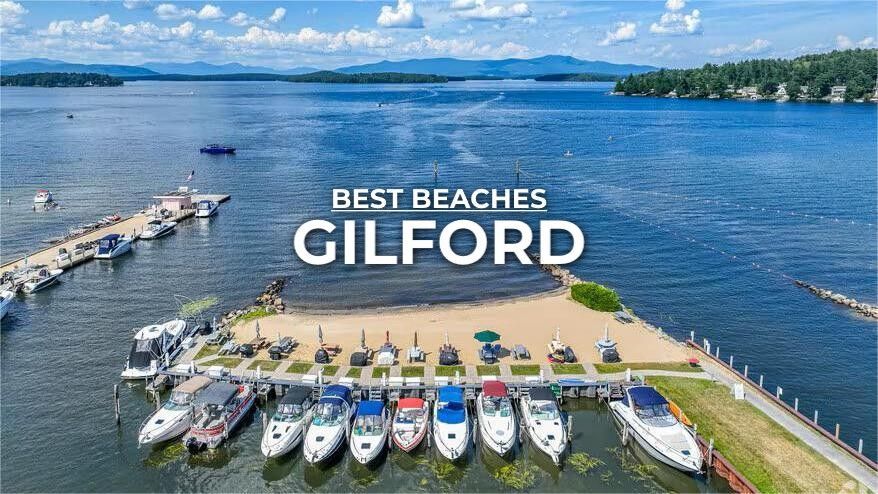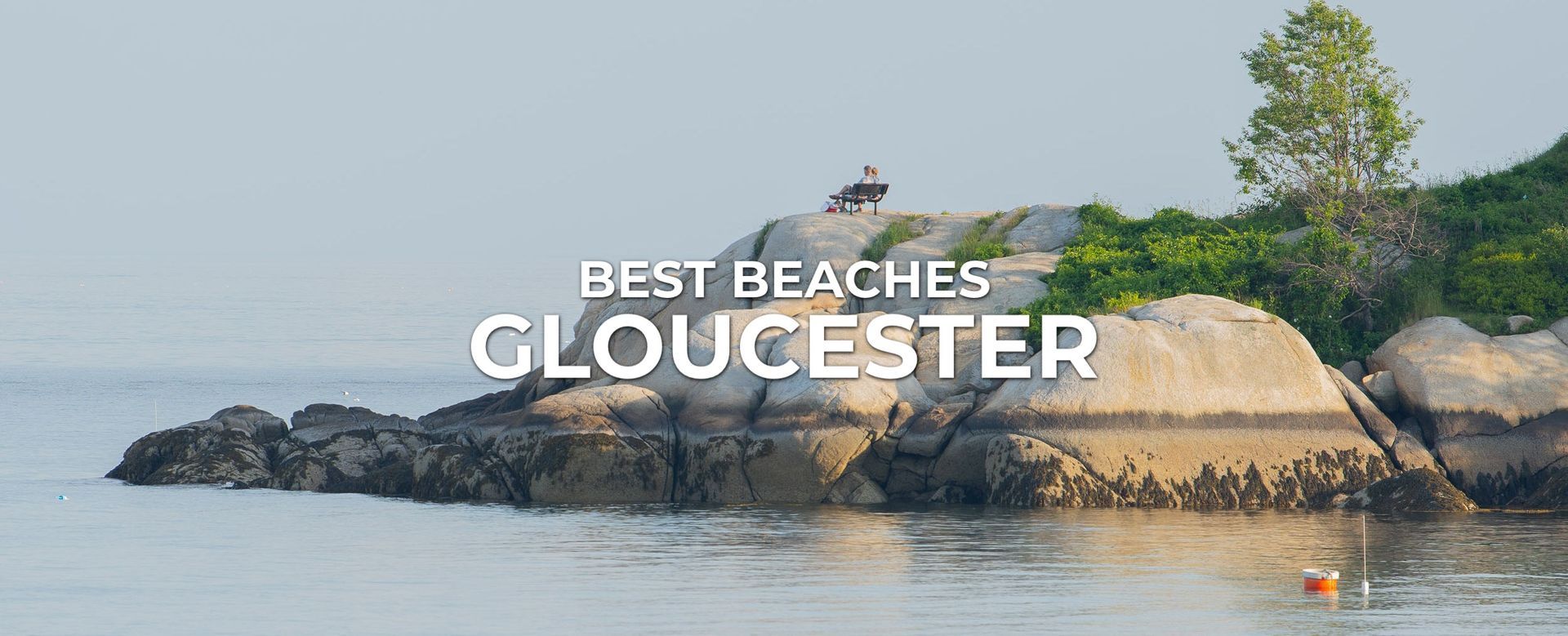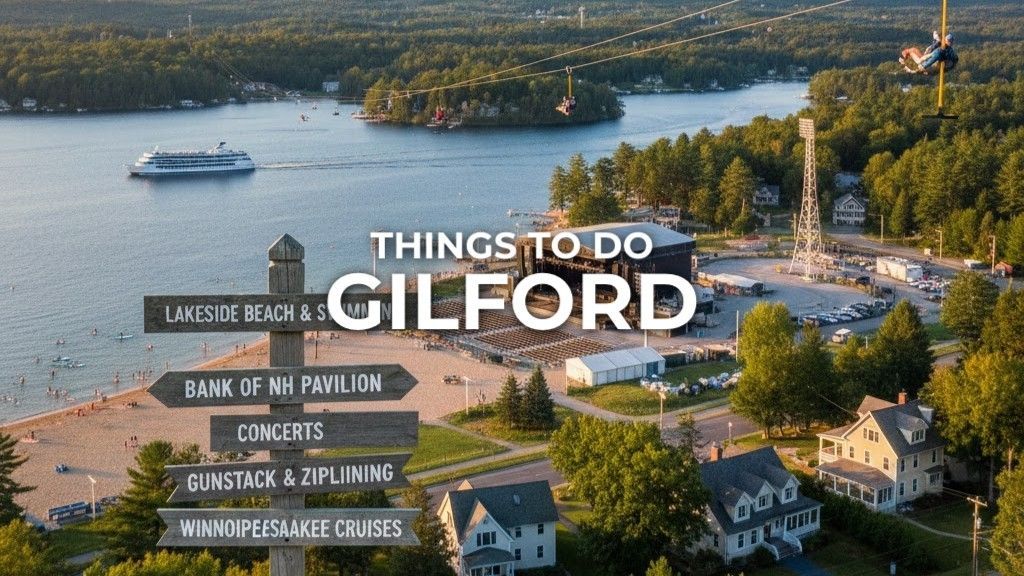Are Vacation Rentals Good Investments?
By: Albert Brown | Created: Sep 1, 2024, Update Sep 5, 2025.
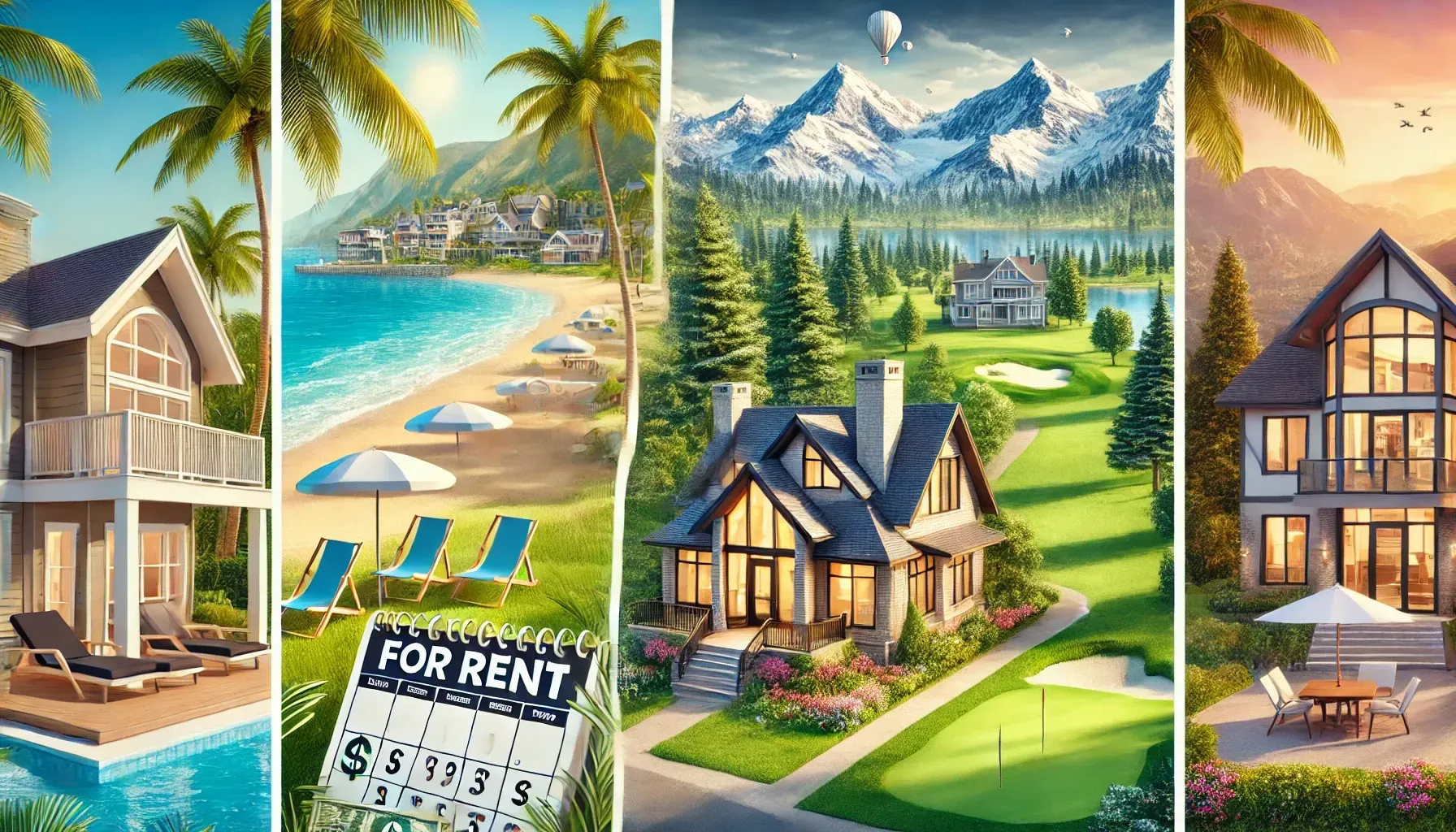
Is Investing in Vacation Rentals a Good Investment?
Yes. Vacation rentals can be a good investment when the basics line up for your specific address.
A vacation rental is a home or condo you rent by the night on platforms like Airbnb or Vrbo. These short-term rentals can beat long-term rentals on cash flow and total return, but only if the following are true for you.
Good fit if:
- People visit your area for more than one reason throughout the year, not just one festival or season.
- Your math clears a safe breakeven occupancy with room to spare. Breakeven occupancy is the percent of nights you must book each month to cover fixed costs.
- You can run the place like a simple hospitality business with clear checklists for pricing, cleaning, and guest messages.
Local rules allow short-term stays at your address, and the taxes are manageable.
Poor fit if:
- Demand is thin or highly seasonal and you do not have a plan for mid-week or off-season bookings.
- Your numbers only work at best-case pricing or require unrealistically high occupancy.
- You want a fully passive asset and do not plan to hire help.
- City or HOA rules are uncertain or likely to tighten.
If your address has steady demand, your numbers beat breakeven, and your operations are organized, a vacation rental can be worth investing in. If any pillar is weak, results suffer, and a long-term rental or a different market may be the better call.
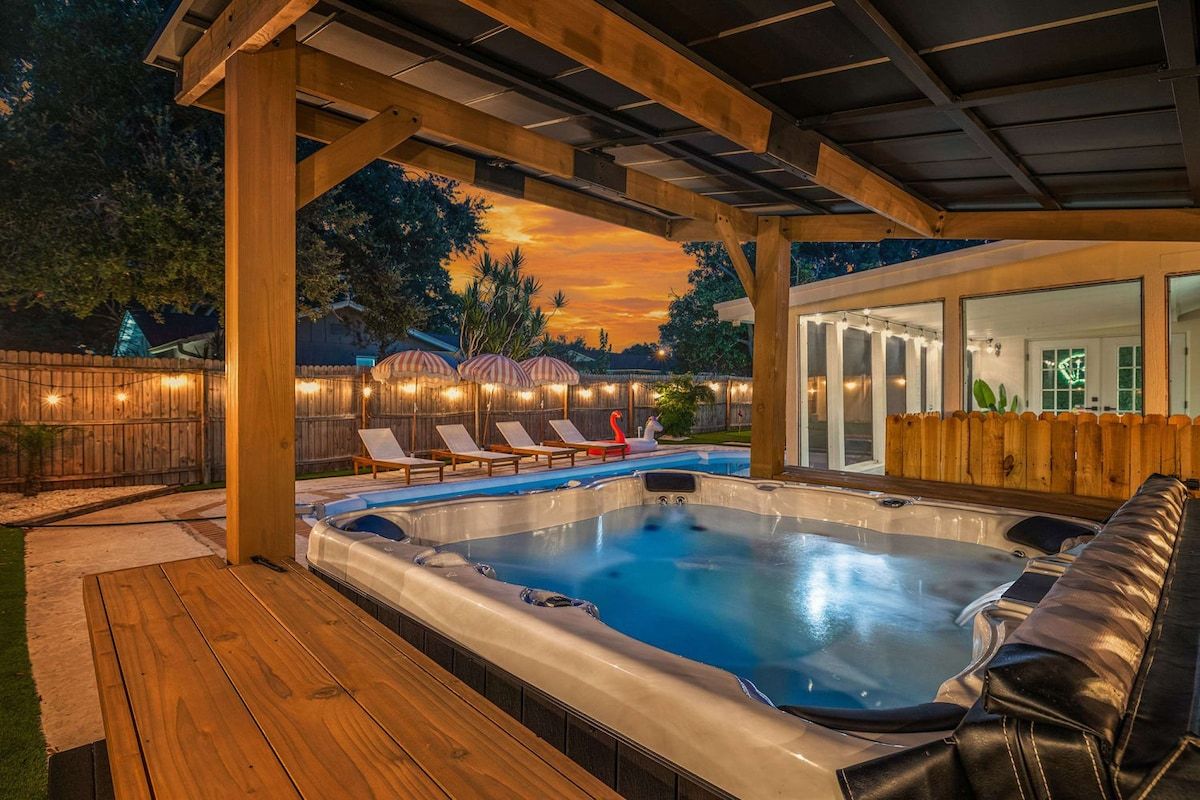
What the data shows
Use broad market numbers as context, then underwrite your specific address.
- In 2023, the average daily rate for short-term rentals was just over 300 dollars. That highlights the revenue potential during peak periods (Henderson, USA Today, 2024).
- The global occupancy rate for vacation rentals was expected to hover around 57.4 percent in 2024, a sign of steady demand in many regions (Henderson, USA Today, 2024).
- The U.S. vacation rental market was estimated at 20.27 billion dollars in 2024, with a projected 24.78 billion dollars by 2029. Statista also projects about 71.94 million U.S. users by 2029 and an average revenue per user of 316.50 dollars in 2024. About 85 percent of U.S. revenue is expected to be generated online by 2029 (Statista, 2024).
- Globally, some summaries point to a 4.7 percent compound annual growth rate through 2030 and a market value of about 119.01 billion dollars by 2030. Australia’s market has been projected at a 6.6 percent CAGR from 2023 to 2030 (Bitton, DoorLoop, 2024).
These figures show why many investors consider vacation rentals. Your job is to test whether your address, with your plan, can earn a fair nightly rate and steady bookings within its local comp set.
For a broader backdrop on demand and pricing norms, see our Airbnb market trends & statistics and this Airbnb market analysis walkthrough.
Pros and cons at a glance
Long-term rentals vs. Vacation Rentals, Short-term rentals, or Airbnb Property
| What investors like | What can hurt returns |
|---|---|
| Higher income potential than long-term rentals | Higher upfront setup cost for furniture and upgrades |
| Prices can rise for holidays and events | More hands-on work: cleanings, guest messages, repairs |
| Upgrades can justify higher nightly rates | Seasonal slowdowns can lower bookings |
| Multiple options later: keep nightly, switch to monthly, or sell | Local rules can limit or ban short-term stays |
| Many expenses are tax-deductible | Loans and insurance can be more complex |
| Personal use during slow periods | Local lodging taxes add admin work |
| Property value can grow over time | Relying on booking platforms adds policy risk |
The left column is about levers you control: presentation, pricing, and service. The right column is about friction: rules, labor, and financing.
Good operators turn friction into systems. That means standard cleaning checklists, a reserve fund for slow months, and a plan B if local rules change, such as switching to mid-term rentals. A mid-term rental means 30 to 90-day stays that serve travel nurses, relocating families, or project teams.
The 3-gate filter
Quick check before you run the numbers
- Demand gate. Are there multiple reasons people visit, not just one season or one festival? This mix is often called stacked demand and it makes bookings steadier across the calendar.
- Numbers gate. Will a realistic price per night and realistic occupancy clear your breakeven with room to spare? Breakeven occupancy means the percent of nights you must book each month to pay all fixed costs.
- Rules gate. Do city rules, permits, taxes, and any HOA bylaws allow what you plan to do? If not, can you succeed as a mid-term or long-term rental instead? Check your city’s ordinance (e.g.,
Florida Airbnb laws,
Arizona STR laws,
Charleston STR regulations).
If all three gates are open, you move on. If one is closed, ask if you can open it with a simple change, like adding a true workspace to win mid-week bookings. If two are closed, pass. This checklist is your early “no” that saves time and money.
Quick math that keeps you honest
Core ideas explained in plain language
- Average nightly rate (ADR). Your average price per booked night.
- Occupancy. The share of available nights that get booked. If you book 18 nights in a 30-night month, occupancy is 60 percent.
- Revenue per available night (RevPAR). Your average nightly revenue, including empty nights. It equals ADR multiplied by occupancy.
- Breakeven occupancy. The occupancy you need to cover fixed costs like mortgage, taxes, insurance, utilities, internet, and management.
- Cash-on-cash return. Your annual cash profit before taxes divided by the cash you invested, such as down payment, closing costs, furniture, and initial upgrades.
A worked example
- You pull a comp set. A comp set is a small group of nearby listings with the same bedroom count and similar quality. You see an ADR near 275 dollars in most months.
- Your fixed monthly costs total about 4,950 dollars.
- Breakeven occupancy = 4,950 ÷ (275 × 30) = 60 percent.
- Local data shows a realistic occupancy band of 54 to 62 percent with spikes during events. At 60 percent, you just break even. That is thin.
- You plan two targeted upgrades: a real desk with task lighting for remote workers and a clean, well-maintained hot tub for weekend groups. If this supports a 295 dollar ADR and nudges shoulder-season occupancy up 3 points, the new breakeven is 4,950 ÷ (295 × 30) = 56 percent.
- Now your likely occupancy band of 58 to 62 percent clears breakeven with a cushion.
If your breakeven sits inside your expected occupancy range, cash flow is fragile. The fix is not wishful thinking. It is an upgrade plan that the market will actually pay for, paired with photos that earn clicks.
Short-term vs long-term
When each approach tends to win
First, quick definitions. A short-term rental is a property you rent by the night or week. A long-term rental is a property you rent by the month or year.
| Criterion | When short-term tends to win | When long-term tends to win |
|---|---|---|
| Income potential | Nightly pricing can be higher during peaks and holidays (ADR sat just over $300 in 2023) | Steady rent creates predictable income |
| Time and effort | More work but more levers to improve revenue | Less work with fewer moving parts |
| Local rules | More exposure to permits and caps | Usually simpler requirements |
| Booking gaps | More ups and downs through the year | Fewer gaps once leased |
| Financing and insurance | Can be pricier and more paperwork | Often cheaper and simpler |
| Taxes | Many expenses are deductible and property can be depreciated (subject to personal-use limits like the 14-day or 10% rule) | Simpler filings with fewer moving parts to optimize |
Short-term wins when your place can earn a visible premium. That usually comes from design, amenities, and great reviews. Long-term wins when your area has weak tourist demand or changeable rules, or when you want a lower-touch asset. Do not compare national averages. Compare this specific home with your plan to a real long-term comp in the same zip code.
Design and amenities that move the needle
Start with these
- Quiet, dark sleep. Good mattresses, blackout curtains, and simple sound control lower “it was noisy” reviews.
- Water or heat feature. A clean hot tub, heated pool, or outdoor shower in warm climates can support higher prices.
- Real workspace. Fast Wi-Fi, a real desk, and solid lighting help win mid-week bookings from remote workers.
- Family-ready basics. A safe layout, a high chair, a travel crib, and a stocked kitchen make group trips easier.
- Photo moments. One or two standout scenes, like a cozy fire pit or a view from the deck, make your listing clickable.
Sleep quality reduces unhappy reviews, which protects your ability to charge fair prices. Water features often create a step up in what guests are willing to pay, especially when positioned as luxury amenities, as long as maintenance is reliable. A real workspace creates weekday demand that smooths out your calendar. Family-ready basics expand who can book you. Strong photos multiply all of this by getting more people to click your listing in the first place.
Myths and realities
| Myth | Reality |
|---|---|
| “If it is near a tourist spot, it will cash flow.” | Micro-location and quality still decide whether you earn the going rate; you must win on look, feel, and function. |
| “Pricing software will fix slow months.” | Software helps only with clean inputs and a home that actually merits the price. |
| “I can fix bad reviews later.” | Ratings move slowly; early misses cap pricing power for months. Prevention beats repair. |
| “Regulations are not a big deal.” | One rule change can alter what is allowed. Always know current rules and have a monthly rental backup plan. |
Market figures and tax rules referenced above come from Henderson at USA Today’s 2024 short-term rental report, DoorLoop’s 2024 vacation rental statistics by Bitton, Statista’s 2024 U.S. market outlook, IRS Topic 415 on renting residential and vacation property, and Stessa’s 2024 guide to short-term rental deductions.
How to underwrite a vacation rental
What “underwrite” means. Underwriting is the process of estimating revenue, expenses, and cash flow to test if a property works as an investment. You are answering three questions: what can this place earn, what does it cost to run, and what cushion do I have in slow months.
Step 1. Build a like-for-like comp set
Pick 5 to 10 nearby listings with the same bedroom count and similar quality. Note price per night, booked calendar density, cleaning fee, and standout amenities. This is your first pass at the average nightly rate, often called ADR. ADR is the average price you collect for each booked night.
Step 2. Map realistic occupancy
Occupancy is the share of nights you actually book. If you book 18 nights in a 30-night month, occupancy is 60 percent. Use the comp set plus local seasonality to set a conservative band for occupancy, for example, 54 to 62 percent.
Step 3. List fixed and variable costs
Fixed costs do not change with bookings. Examples: mortgage, property taxes, insurance, HOA, utilities, internet, landscaping, and software. Variable costs move with bookings. Examples: cleaning, supplies, platform fees, credit card fees, and consumables. Write them down line by line.
Step 4. Find breakeven occupancy
Breakeven occupancy is the percent of available nights you need to book to cover fixed costs. Formula: monthly fixed costs divided by ADR times 30 nights. If fixed costs are 4,950 dollars and ADR is 275 dollars, breakeven occupancy is 4,950 ÷ (275 × 30) = 60 percent.
Step 5. Add a small sensitivity grid
This shows how cash flow moves when ADR or occupancy shifts.
| ADR | 55% occupancy | 60% occupancy | 65% occupancy |
|---|---|---|---|
| 275 dollars | 4,537.50 dollars gross | 4,950.00 dollars gross | 5,362.50 dollars gross |
| 295 dollars | 4,867.50 dollars gross | 5,310.00 dollars gross | 5,752.50 dollars gross |
If your fixed costs are 4,950 dollars, the grid shows how thin the margin can be at 275 dollars ADR. A small bump to 295 dollars and a 2 to 3 point occupancy lift can create a safety cushion. Your plan should explain exactly how you will earn that higher price, for example, a real workspace that wins mid-week bookings or a clean, well-photographed hot tub that lifts weekend demand.
Step 6. Pressure-test the calendar
Answer two questions. First, who books you mid-week outside of holidays? Second, what happens if a city event gets canceled? You want more than one demand driver so that your calendar does not rely on a single peak.
Taxes that matter, in plain English
Start with classification.
The IRS treats most vacation rentals as rental property. If you rent a place for 14 days or less in a year, you do not report that income, and you also cannot deduct the expenses for those days (IRS Topic 415).
If you rent more than 14 days, and your personal use does not exceed 14 days or 10 percent of the days it is rented, the property is treated as a rental for tax purposes. You can generally deduct operating costs in proportion to rental use, and you can take depreciation (IRS Topic 415; Rohde, Stessa 2024).
What depreciation is.
Depreciation is a paper expense that spreads the cost of the building over time. For residential rental property, the standard recovery period is 27.5 years. Land is not depreciated, only the building and eligible improvements.
Example: if the building portion is 400,000 dollars, annual depreciation is about 400,000 ÷ 27.5 = 14,545 dollars. That reduces your taxable rental income even though you do not write a check for it (Investopedia, Folger 2024).
Mixed-use rules.
If you use the home personally and also rent it, you must split expenses between personal and rental days. Personal use above the 14-day or 10 percent limit can limit deductions and can change how the property is treated for taxes (IRS Topic 415).
Material participation.
Some short-term rental owners can treat losses as non-passive if they materially participate. In simple terms, this means you are regularly and substantially involved in operations and you meet one of several hour-based tests.
This can allow current-year losses to offset other non-passive income. The details are technical, so most investors confirm this point with a CPA who knows short-term rentals.
When you sell.
Depreciation taken during ownership can be “recaptured,” which means part of your gain can be taxed at a special rate. Knowing this up front helps you plan holds and exits with eyes open (Investopedia, Folger 2024).
Local lodging taxes.
Many cities and counties charge occupancy or tourism taxes on short stays. Platforms sometimes collect and remit all or part of these taxes, but you may still need a local registration or a separate remittance for some taxes.
Always check your city or county’s official pages, then confirm what the platform actually files on your behalf (Zeevou overview; verify locally).
Simple operating system for steady bookings
What an operating system is. An operating system is a repeatable routine that keeps pricing, cleaning, maintenance, and guest communications on track. In other words, standard operating procedures. Think written checklists, not mental notes.
Weekly pricing routine
- Review the next 60 to 90 days every Monday.
- Compare your listing to 5 to 10 comps. Adjust price floors and weekend premiums.
- Add event tags to your calendar. Raise prices only if your quality and reviews justify it.
- Fill orphan gaps. If a 2-night gap appears between bookings, offer a small discount rather than eating empty nights.
- Set a last-minute rule. Example: 10 percent off inside 3 days if the calendar is open.
Regular, small adjustments beat large, rare changes. You protect the average nightly rate while improving the chance that shoulder nights get booked.
Cleaner SOP that protects reviews
- Standardize arrival and departure checklists. Include linens, consumables, and quick photo documentation.
- Use a shared calendar with buffer time between cleans.
- Add a 10-minute quality check by someone other than the cleaner.
- Keep a spare set of linens and a small supply closet to reduce missed items.
Reviews move slowly. Preventing small misses protects ratings and pricing power far better than trying to recover after a rough month.
Messaging templates
- Booking confirmation that sets expectations for check-in time, parking, and noise rules.
- Pre-arrival message 48 hours before check-in with access instructions and a short local guide.
- Mid-stay check-in on night one that invites quick feedback.
- Checkout reminder with simple tasks and a thank you plus a gentle request for a review.
Clear, kind, and predictable messaging reduces friction and questions. That lowers the chance of last-minute cancellations and improves guest sentiment.
Management: do it yourself or hire help
What full-service property management includes. Marketing, pricing, guest messaging, cleaning coordination, minor maintenance, and basic reporting. Typical management fees range from 20 to 30 percent of rental income, sometimes more for luxury inventory. Pricing models vary, so compare total cost after fees, cleans, and pass-throughs, not just the headline percentage.
If you live far away or you prefer a hands-off setup, hiring pros can protect your time and your rating. If you enjoy operations and have local help, you can keep control and fees lower by self-managing. A middle path is using a local cleaner and a virtual assistant for messaging while you own pricing, photos, and vendor relationships.
Regulations: patterns to watch and how to check them
Cities, counties, or HOAs can control whether short stays are allowed, how many guests you can host, what permits you need, and what taxes apply. Some places allow only hosted stays in a primary residence. Others allow whole-home stays by permit and cap the number of permits.
How to check your area.
- Search your city name plus “short-term rental permit” or “vacation rental ordinance.”
- Read the official city page. Confirm permit steps, inspection checklists, and renewal fees.
- Check zoning maps and HOA bylaws for the specific address.
- Confirm lodging tax registration and filing process at the county or state revenue site.
- Ask platforms what taxes they collect and remit in your city. Keep your own records anyway.
One rule change can alter what is allowed and what it costs to comply. Plan a backup path to mid-term or long-term if rules tighten. A simple line in your underwriting model that reads “pivot if nightly stays are restricted” can save a deal.
Pulling it together: a quick case study
- Address type. 3-bedroom home near a regional hospital and a popular weekend festival area.
- Comp set. ADR near 275 dollars most months, occupancy 54 to 62 percent, event spikes to 70 percent.
- Fixed costs. About 4,950 dollars per month.
- Breakeven. 60 percent at 275 dollars ADR.
- Upgrade plan. Real workspace and a clean hot tub.
- New target. ADR 295 dollars with occupancy up 2 to 3 points in shoulder months.
- Result. Breakeven drops to about 56 percent, and typical months clear with a cushion.
- Tax setup. Treat as rental property, track days for the 14-day or 10 percent personal-use rule, and depreciate the building over 27.5 years. Confirm material participation with a CPA if you plan to use losses against other income (IRS Topic 415; Stessa 2024; Investopedia 2024).
- Compliance. City permit on file, lodging tax registration complete, platform collection verified, and records kept monthly.
This is what a realistic plan looks like. The numbers, the upgrade story, and the operating routine work together.
Choosing the right vacation rental property
Start with places that people already visit for more than one reason. Weekends driven by events are not enough. You want steady demand from parks, water, dining, business travel, and hospitals or universities. That mix supports bookings across the calendar.
Property traits that matter most
- Located in markets with year-round tourism and business travel. You can shop for locations using tools like SummerOS and Airdna. (For a start, check our list of best places to buy a vacation home).
- Beds and baths that match who actually visits the area. Families need real sleeping capacity and safe layouts.
- Quiet at night and easy parking. Noise complaints ruin ratings. Parking removes friction.
- Outdoor space you can make inviting. A small deck with simple seating and lighting is often enough.
- A design plan you can finish before photos. Think clean lines, neutral palette, and one or two “hero” shots.
- Rules that allow nightly stays. Confirm city pages and any HOA rules for the exact address before you write an offer.
A strong address with the right layout and a simple design plan is easier to photograph well and easier to keep clean. That supports better prices and steadier bookings without adding daily stress.
Financing and buying steps
- Plan the cash. List the down payment, closing costs, furniture, safety gear, photography, and a two-month reserve. Add a small buffer so surprises do not become delays.
- Pick your loan. Talk to a lender who knows vacation rentals. Some loans are based on your income. Others use projected earnings from the property. Ask for a plain-language breakdown of rates, fees, and required reserves.
- Make the offer. Keep inspection timelines realistic. You need time to price furniture, confirm local permits, and get clear answers about allowed uses.
- Before closing. Order furniture early, schedule photography, and draft your listing copy. Connect utilities, internet, and smart locks. Have a cleaner and a handyman lined up with backup options.
- After closing. Finish the setup, take photos, and publish your listing across channels like Airbnb and Booking.com. Turn on your pricing rules and your message templates on day one.
Tip. If you want help but not a full-service manager, use a local cleaner plus a virtual assistant and keep pricing and photos in your own hands. It is a good way to learn while keeping costs in check.
FAQs new investors ask
1) How much should I budget to furnish a 3-bedroom vacation rental property?
Plan 8,000 to 15,000 dollars for basic, durable furniture and kitchen gear, plus mattresses, blackout curtains, and safety items. Add more if you need outdoor seating or a hot tub. You can trim costs by buying in sets and sticking to a simple color palette.
2) What is a fair nightly price for an Airbnb rental in my area?
Start with a like-for-like comp set. Match bedroom count, quality, and amenities. Your first price should sit in the middle of that range. Raise slowly as reviews build. Lower price floors for orphan gaps of one to two nights so empty nights do not multiply.
3) Condo or house for a first vacation rental?
Condos can be easier to clean and insure, but some buildings do not allow nightly stays. Houses give you more control over parking and outdoor space. Read the actual HOA rules for the address. Do not rely on verbal assurances.
4) Can I self-manage the first place?
Yes, if you keep it simple. Use written checklists for cleaning and restocking. Review the next 60 to 90 days each week. Message guests at clear touchpoints. If time gets tight, hire help for messaging or turnovers and keep pricing in your hands.
5) Do vacation rentals hold up during slow economies?
Many domestic drive-to areas have held up better than pure fly-to destinations. Your safety net is demand variety and a clean, family-friendly setup. If needed, switch to mid-term stays for nurses or project teams until travel rebounds.
6) Is this a real estate investment or a hospitality business?
It is both. Treat it like real estate when you buy and like hospitality when you run it. That mix is what lets a well-chosen vacation rental earn better than many rental properties.
7) Where do “rental markets” fit in?
Use city and neighborhood trends as a starting point, then underwrite the specific block and layout. Strong rental markets can still have weak blocks. Your address and your plan decide outcomes.
Mistakes first-time buyers can avoid
- Over-indexing on averages. National figures are helpful, but your booking calendar is local. Trust your comp set and your photos more than broad stats.
- Buying for you, not your guest. Personal taste can clash with what guests book. Simple, durable, and bright wins more often than trendy.
- Skipping rules. If nightly stays are not allowed, a vacation home will not become a performing vacation rental. Read the city page and the HOA documents before you submit a bid.
- Underestimating setup. A great listing lives or dies on small details. Stock the kitchen. Label switches. Add blackout curtains. Test Wi-Fi where people will work.
- Letting the calendar drift. A weekly pricing routine matters more than any single tweak. Small, regular adjustments protect your price and keep bookings steady.
Final verdict for investors
A well-chosen vacation rental can be a strong investment. The winners follow a simple pattern. They buy in places with more than one reason to visit. They pick a layout that matches real demand. They present the home clearly and keep the service reliable. They control their costs. They check the rules for the exact address. They treat it like real estate when they buy and like hospitality when they operate.
If you want a more passive path, hire a trusted vacation rental manager and keep decision rights on photos, amenity upgrades, and pricing floors. If you like hands-on work, self-manage in the first place, and add help as the calendar fills. Either way, your plan should spell out how the vacation rental will earn its keep in good months and slow ones.
Work with us
Who we are. Home Team Luxury Rentals helps you acquire the right vacation rental and operate it like a simple, reliable business. We pair real estate search and underwriting with hands-on setup and daily management so your investment stays clear and measurable.
What we do for your property. We source, set up, and run your vacation rental from day one. That includes comp sets, a 90-day launch plan, photography, listing copy, pricing rules, guest messaging, cleaning checklists, and owner reporting. You keep ownership and full visibility into performance for the property.
How the first 90 days work.
- Week 1 to 2. Quick comp set, plain-language underwriting, and an amenity plan tied to expected pricing for the vacation rental.
- Week 3 to 6. Furnish, photograph, and publish the listing. We install checklists and a weekly pricing routine for the property.
- Week 7 to 12. Optimize photos, titles, and guest flow. We tighten review quality and adjust pricing bands to protect your
investment.
Why owners choose us.
- Clear math and a written plan instead of vague promises.
- Design choices that make a vacation rental easier to clean and easier to photograph.
- Friendly guest messaging and steady routines that protect ratings and the value of the property.
- Options that fit your style, whether you want full service or a focused launch.
If you are ready to buy a vacation rental, ask us for a quick comp set and a plain-language 90-day plan. We will show how the vacation rental can perform in your market, where risks sit, and how we will handle them so your real estate investment stays aligned with your investing goals.
Prefer to start small? We can help with photos, listing copy, or a one-time pricing setup for your first Airbnb. When you are ready, we will take the same vacation rental and scale it with better presentation, calmer operations, and a clearer view of performance for your property.
Categories: Investor, Property Management
